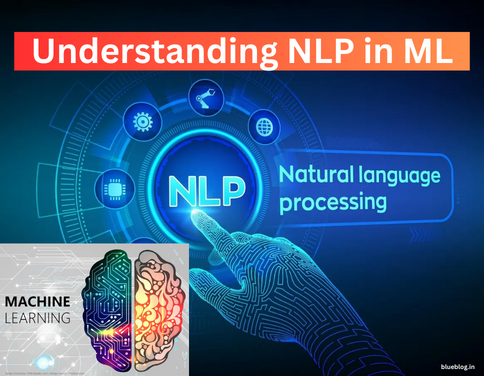Natural Language Processing (NLP) is like teaching machines to speak human. It’s the bridge between computers and our language, enabling them to understand, interpret, and generate human language. In the realm of Machine Learning, NLP plays a pivotal role, powering various applications from chatbots to language translation systems.
Understanding Natural Language Processing (NLP)

What is NLP?
NLP is a branch of artificial intelligence that focuses on the interaction between computers and humans through natural language. It encompasses tasks like text understanding, sentiment analysis, and language translation. Think of it as teaching machines to understand our words just like another human would.
Importance of NLP in Machine Learning
In the vast landscape of Machine Learning, NLP stands out as a crucial area due to its wide range of applications. From customer service chatbots that resolve queries to predictive text algorithms that complete our sentences, NLP is everywhere, revolutionizing how we interact with technology.
Key Components of Natural Language Processing
Tokenization and Text Preprocessing
Before machines can understand language, they need to break it down into smaller, digestible chunks. That’s where tokenization comes in. It splits text into words or phrases, making it easier for algorithms to process. Text preprocessing involves cleaning and formatting raw text data, removing noise and irrelevant information.
Part-of-Speech Tagging
Imagine if every word in a sentence wore a label indicating its grammatical role—like subject, verb, or object. That’s essentially what part-of-speech tagging does. It assigns tags to each word based on its grammatical function, enabling machines to understand the structure and meaning of sentences.
Named Entity Recognition
Named entities are words or phrases that represent specific categories like names of people, organizations, or locations. Named Entity Recognition (NER) identifies and classifies these entities within a body of text, facilitating tasks like information extraction and categorization.
Popular NLP Techniques and Algorithms
Word Embeddings (Word2Vec, GloVe)
Words carry meanings, but how do machines understand those meanings? Word embeddings encode words into numerical vectors, representing their semantic relationships in a high-dimensional space. Word2Vec and GloVe are popular techniques used to generate word embeddings, enabling machines to grasp the contextual meaning of words.
Recurrent Neural Networks (RNNs)
RNNs are a type of neural network designed to handle sequential data like sentences or time-series data. They excel in capturing dependencies between words in a sentence, making them ideal for tasks like language modeling and sequence prediction.
Transformer Models (BERT, GPT)
Transformer models have revolutionized NLP with their attention mechanism, allowing models to focus on relevant parts of input text. BERT (Bidirectional Encoder Representations from Transformers) and GPT (Generative Pre-trained Transformer) are state-of-the-art models known for their prowess in various NLP tasks, including question answering and language generation.
Applications of NLP in Real Life
- Sentiment Analysis
- Sentiment analysis gauges the sentiment or opinion expressed in a piece of text—whether it’s positive, negative, or neutral. Businesses use sentiment analysis to understand customer feedback, social media trends, and market sentiments.
- Text Classification
- Text classification involves categorizing text documents into predefined categories or classes. From spam detection in emails to news categorization, text classification algorithms help automate the process of organizing and filtering large volumes of text data.
- Machine Translation
- Machine translation aims to automatically translate text from one language to another. Services like Google Translate leverage NLP techniques to decipher the meaning of input text and generate accurate translations in real-time, breaking down language barriers worldwide.
Challenges and Future Trends in NLP
Ambiguity and Polysemy
One of the biggest challenges in NLP is dealing with language ambiguity and polysemy—the existence of multiple meanings for words or phrases. Resolving ambiguity is crucial for accurate language understanding and generation by machines.
Ethical Considerations
As NLP technologies become more pervasive, ethical considerations surrounding privacy, bias, and fairness come into play. It’s essential to develop NLP systems that uphold ethical standards and respect user privacy while delivering reliable and unbiased results.
Advancements in NLP Research
The field of NLP is rapidly evolving, driven by ongoing research and innovation. Advancements in areas like unsupervised learning, few-shot learning, and multi-modal learning promise to push the boundaries of what NLP can achieve, opening new possibilities for human-machine interaction.
Follow Us On Instagram Follow Us On XAlso read: Discovering the Mysterious Actors of Heeramandi: Exploring Drama and Suspense

